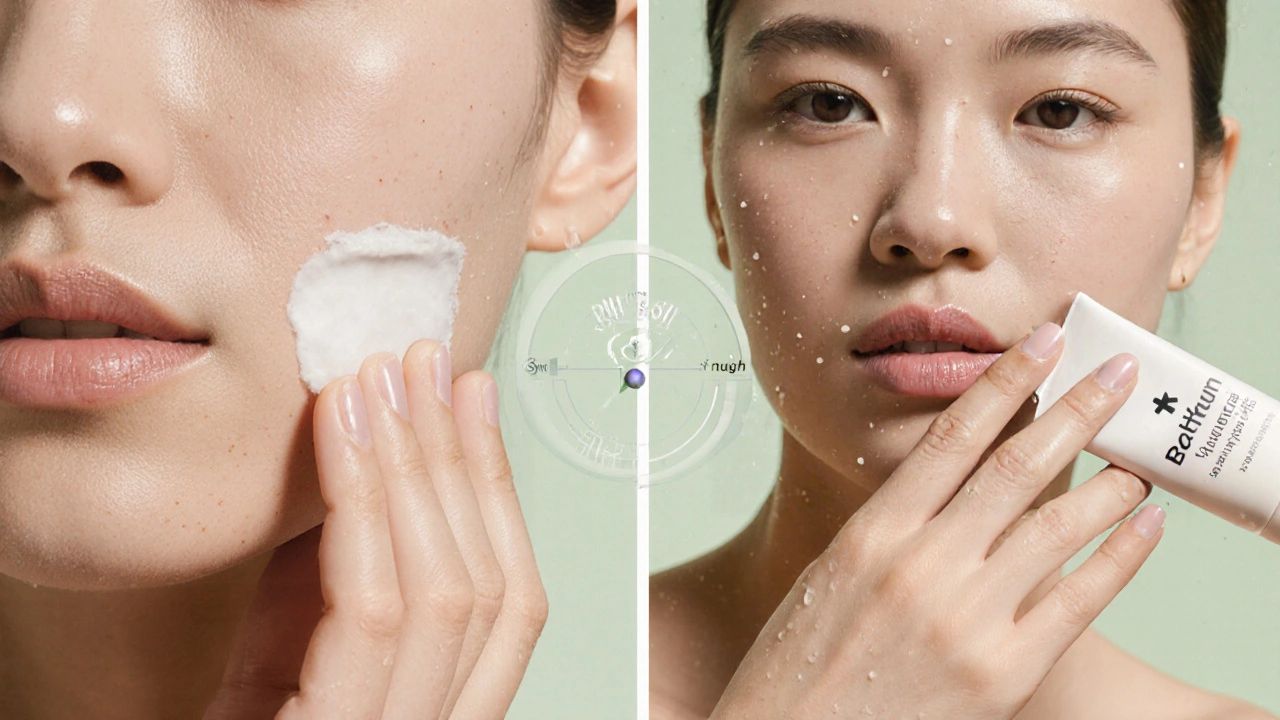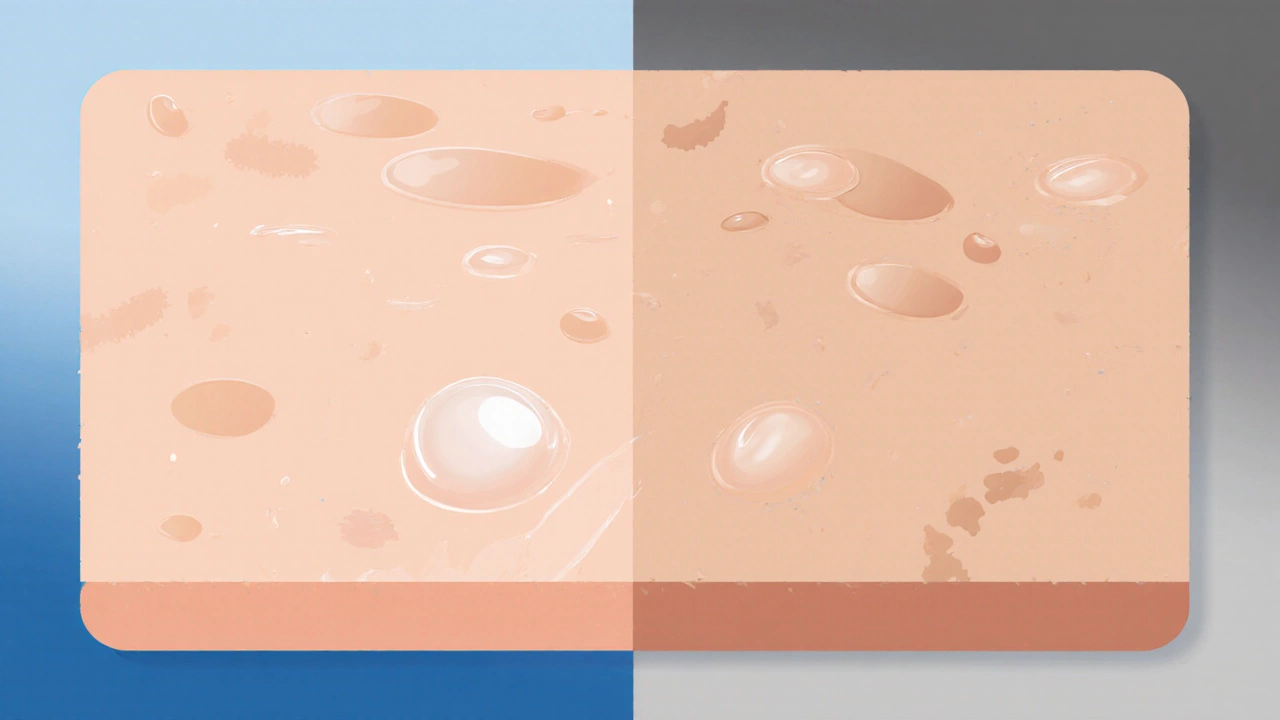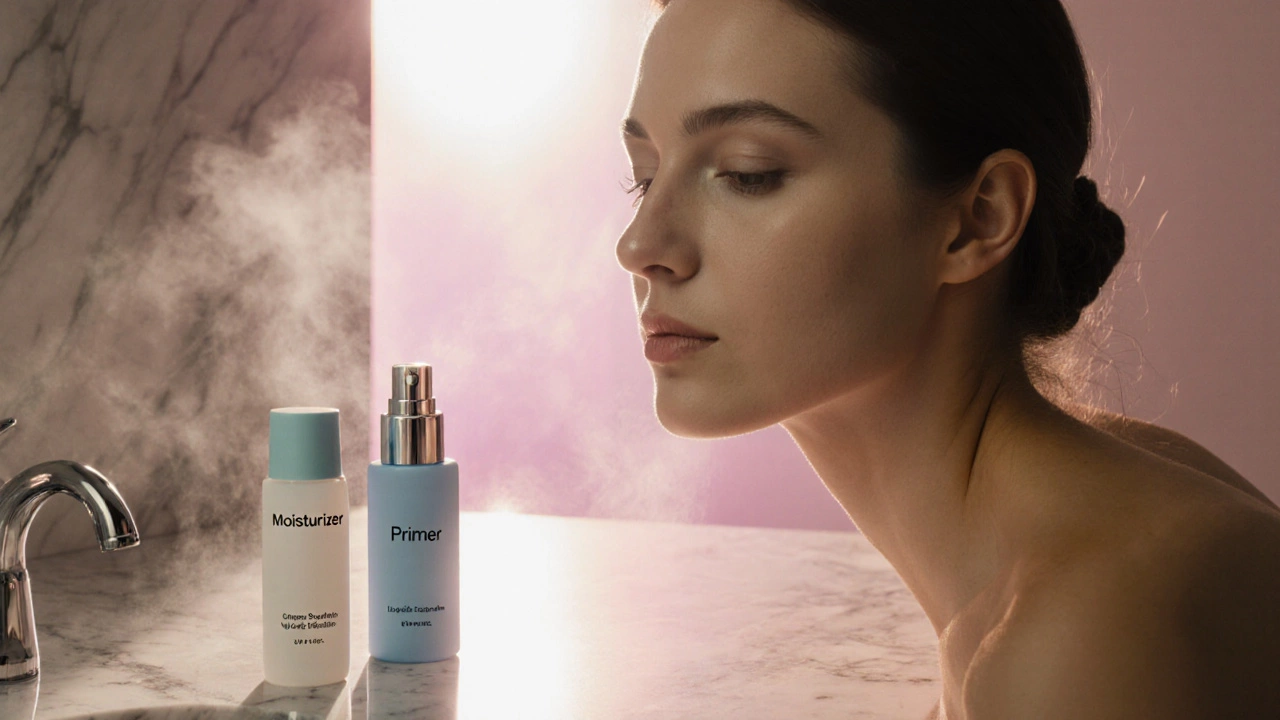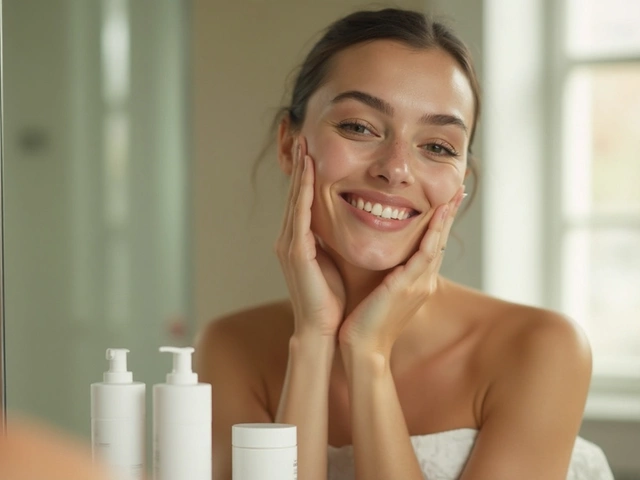Moisturizer & Primer Order Calculator
Personalized Application Guide
Find the optimal order for your specific skin type and products
Ever stare at your vanity and wonder whether to smooth on moisturizer before primer or the other way around? The answer isn’t as simple as “always one first.” It depends on what your skin needs, the type of products you use, and the look you’re after. This guide breaks down the science, walks you through a fool‑proof routine, and helps you troubleshoot the most common hiccups.
Why the Order Matters
Both moisturizer and primer are designed to create a smooth canvas, but they tackle different problems. Moisturizer hydrates, balances the skin’s barrier, and can treat specific concerns (like redness or oil control). Primer, on the other hand, is a makeup‑focused product that fills pores, reduces shine, and helps pigments adhere longer. Applying them in the wrong order can cause product pilling, uneven texture, or a makeup look that fades too quickly.
Understanding Moisturizer
Moisturizer is a hydrating formulation that delivers water‑binding ingredients, occlusives, and sometimes active skincare actives to the skin’s surface. Typical attributes include viscosity (light‑weight gel, cream, or lotion), SPF level (often 0‑30), and target skin type (dry, oily, combination). For example, a 1.5% hyaluronic acid gel offers 1,000% water retention, while a 0.5% dimethicone cream creates a breathable barrier that locks moisture in.
When you apply moisturizer correctly, you’re essentially priming the skin from the inside out. It smooths fine lines, reduces flakiness, and prepares the surface for any subsequent layers.

Understanding Primer
Primer is a cosmetic base that sits on top of the skin to even out texture, control oil, and extend the wear time of foundation and other makeup. Primers come in silicone‑based, water‑based, or hybrid formulas, each with distinct attributes: silicone primers fill in pores with dimethicone, while water‑based primers often contain vitamins or antioxidants for a skin‑care boost.
The key point is that primer is designed to work *over* a moisturized surface. If the skin is too dry, the primer can cling to patches, leading to a cakey finish. If the skin is oily, the primer helps keep shine at bay-but only if the skin isn’t already slick from a heavy moisturizer.
Step‑by‑Step Application Guide
- Cleanse: Use a gentle cleanser that matches your skin type. This removes any oil or residue that could interfere with product absorption.
- Tone (optional): A hydrating toner can add a thin layer of moisture and prepare the skin for better product uptake.
- Apply Moisturizer: Warm a pea‑size amount between your fingertips and smooth it over your face using upward strokes. Wait 30‑60 seconds for it to settle. If you’re using a moisturizer with SPF, this also doubles as sun protection.
- Assess the Surface: Lightly press a tissue to your forehead. If it feels slightly tacky but not greasy, you’re ready for primer. If it feels oily, blot with a paper towel; if it feels dry, add a second thin layer of moisturizer.
- Apply Primer: Take a small amount (about the size of a rice grain) and dot it over the T‑zone, cheeks, and jawline. Using a brush or fingertips, blend outward in gentle, circular motions. Allow 15‑20 seconds for the primer to set before moving on to foundation.
- Proceed with Makeup: Apply foundation, concealer, and the rest of your makeup as usual. The layered approach ensures longevity and a smooth finish.
Notice the emphasis on timing: letting each layer absorb prevents pilling, a common problem when products are rushed together.
Special Cases & Adjustments
Not everyone’s skin behaves the same way. Below are a few scenarios and how to tweak the routine.
- Very Dry Skin: Choose a rich, occlusive moisturizer (e.g., shea butter or ceramide cream) and skip a heavy silicone primer. A lightweight, hydrating primer with glycerin will be enough to smooth texture without feeling sticky.
- Oily or Combination Skin: Opt for an oil‑free, matte‑finish moisturizer with ingredients like niacinamide. Follow with a silicone‑based primer that controls shine. Some makeup artists even double‑prime (moisturizer → mattifying primer → pore‑filling silicone primer) for high‑sweat events.
- Layering Multiple Skincare Actives: If you’re using serums (vitamin C, retinol, etc.), apply them **before** moisturizer. The order becomes: cleanser → serum → moisturizer → primer.
- Time‑Pressed Mornings: A two‑in‑one moisturiser‑primer hybrid can save steps. Look for products labeled “Moisturizing Primer” that contain both humectants and silicone mesh.

Common Mistakes & How to Fix Them
Even seasoned beauty lovers slip up. Here’s a quick cheat‑sheet of pitfalls and fixes.
- Pilling: Caused by overlapping product layers that haven’t dried. Remedy - give each layer at least 30 seconds to absorb, or use less product.
- Uneven Finish: Often due to applying primer on top of a greasy moisturizer. Solution - choose a lightweight, non‑comedogenic moisturizer, or blot excess oil before primer.
- Foundation Sliding Off: Usually a result of too much moisturizer. Apply a thin glaze of moisturizer and let it set before primer.
- Dry Patches Under Makeup: Fix by spot‑treating with a dab of hydrating serum or a milky moisturizer after primer, then gently blend.
Quick Comparison: Moisturizer First vs. Primer First
| Aspect | Moisturizer First | Primer First |
|---|---|---|
| Skin Hydration | Optimal - moisture locked in before makeup | Reduced - primer can block moisturizer absorption |
| Makeup Longevity | High - primer adheres to a smooth, hydrated base | Variable - may cause slippage on dry patches |
| Pore‑Filling Effect | Enhanced - moisturized skin lets silicone primers fill pores better | Limited - primer sits on uneven skin, highlighting texture |
| Risk of Pilling | Low if layers are allowed to set | Higher - primer can trap excess moisturizer beneath |
| Best For | All skin types, especially dry or mature | Very oily skin when using a mattifying primer only |
In most everyday scenarios, the moisturizer primer order with moisturizer first wins out on both comfort and performance.
Frequently Asked Questions
Do I need a primer if I use a moisturizing foundation?
Moisturizing foundations contain some skin‑care ingredients, but they rarely provide the same pore‑filling and oil‑control benefits as a dedicated primer. If you have visible pores or want your makeup to last beyond eight hours, a light primer still adds value.
Can I skip moisturizer on days I wear only primer and powder?
Skipping moisturizer is okay for very oily skin, but most skin benefits from at least a thin hydrating layer. A mist or water‑based gel before primer can keep skin from feeling tight without adding shine.
What’s the difference between a silicone primer and a water‑based primer?
Silicone primers (e.g., dimethicone) create a smooth, matte film that fills pores and resists oil. Water‑based primers focus on hydration and often contain vitamins or botanical extracts. Choose silicone for oily skin or heavy coverage, water‑based for dry or sensitive skin.
Should I apply serum before or after moisturizer?
Apply serum first, because it’s usually lighter and contains active ingredients that need direct contact with the skin. Follow with moisturizer to lock the serum in, then primer.
Is it okay to use a sunscreen‑infused moisturizer and then a primer?
Yes. A broad‑spectrum SPF 30+ moisturizer provides sun protection, and a primer on top won’t diminish that protection. Just ensure the moisturizer fully dries before you layer the primer.
By understanding what each product does and giving it a moment to settle, you’ll get a flawless base that lasts all day. Remember: hydrate first, then seal the deal with primer - that’s the order that works for most skin types and makeup looks.


